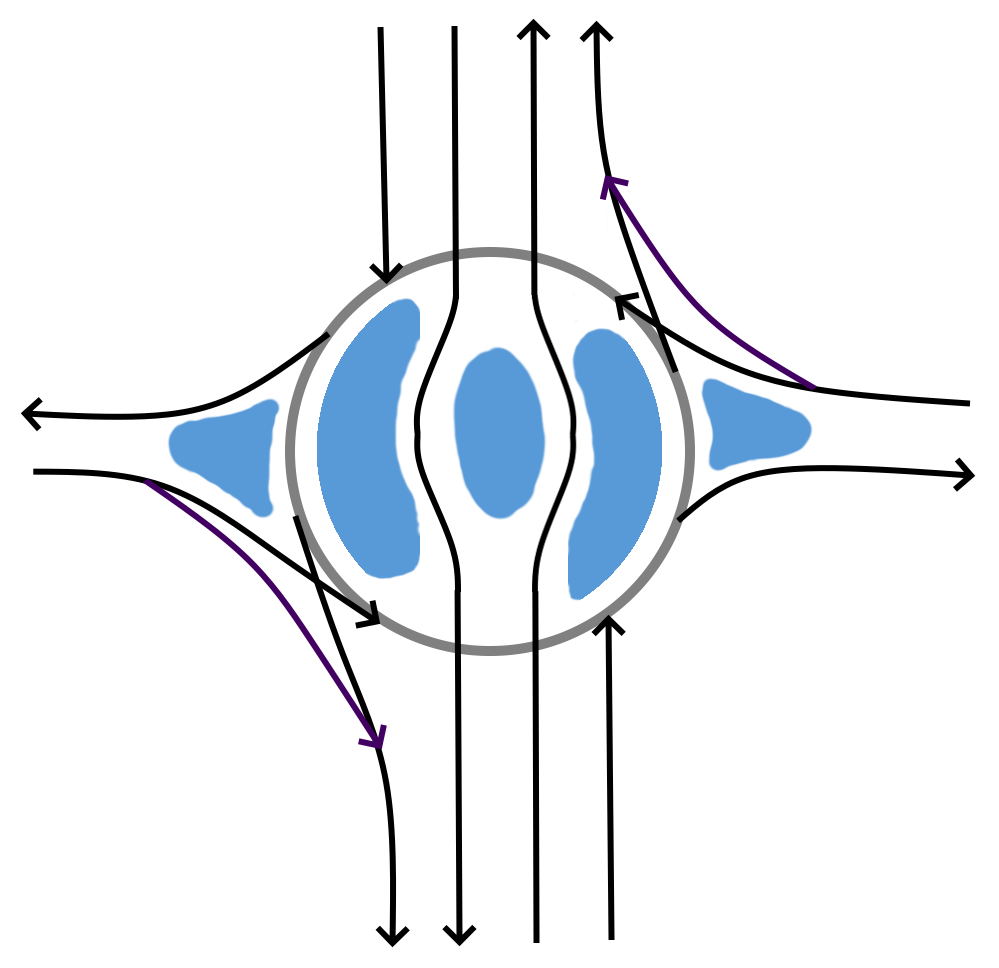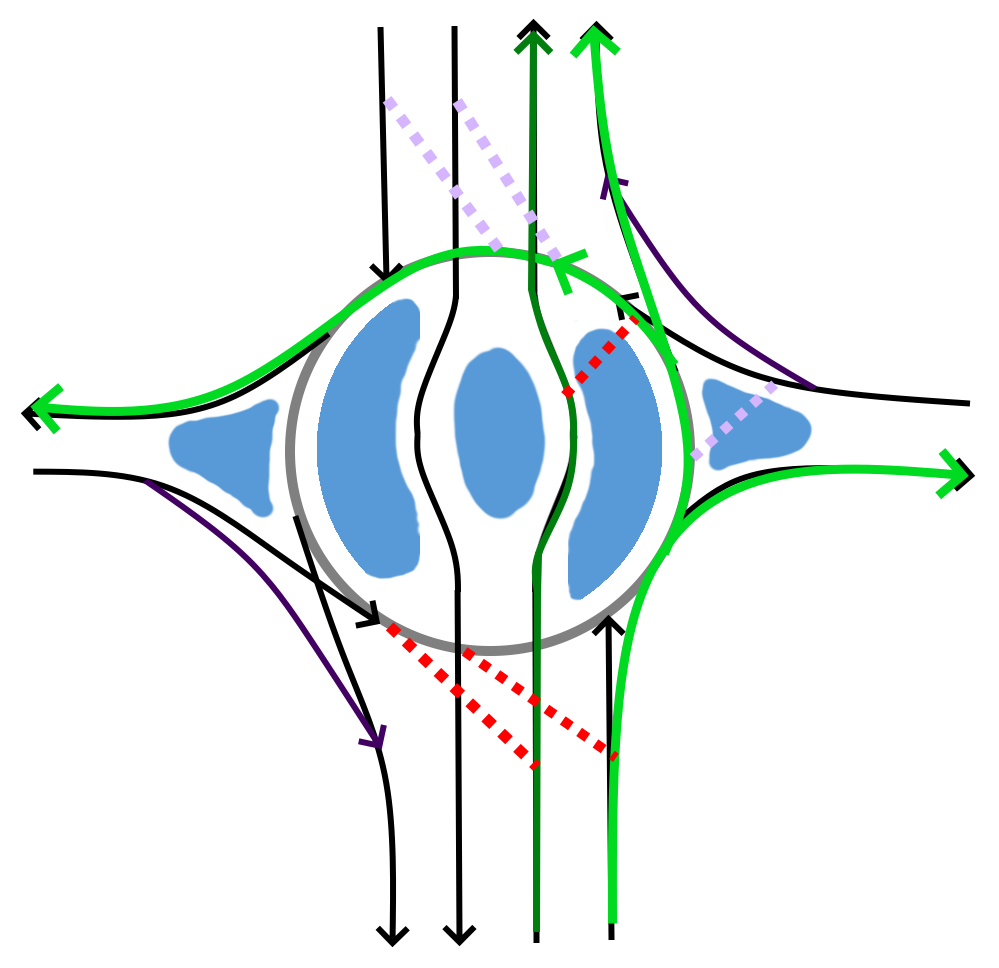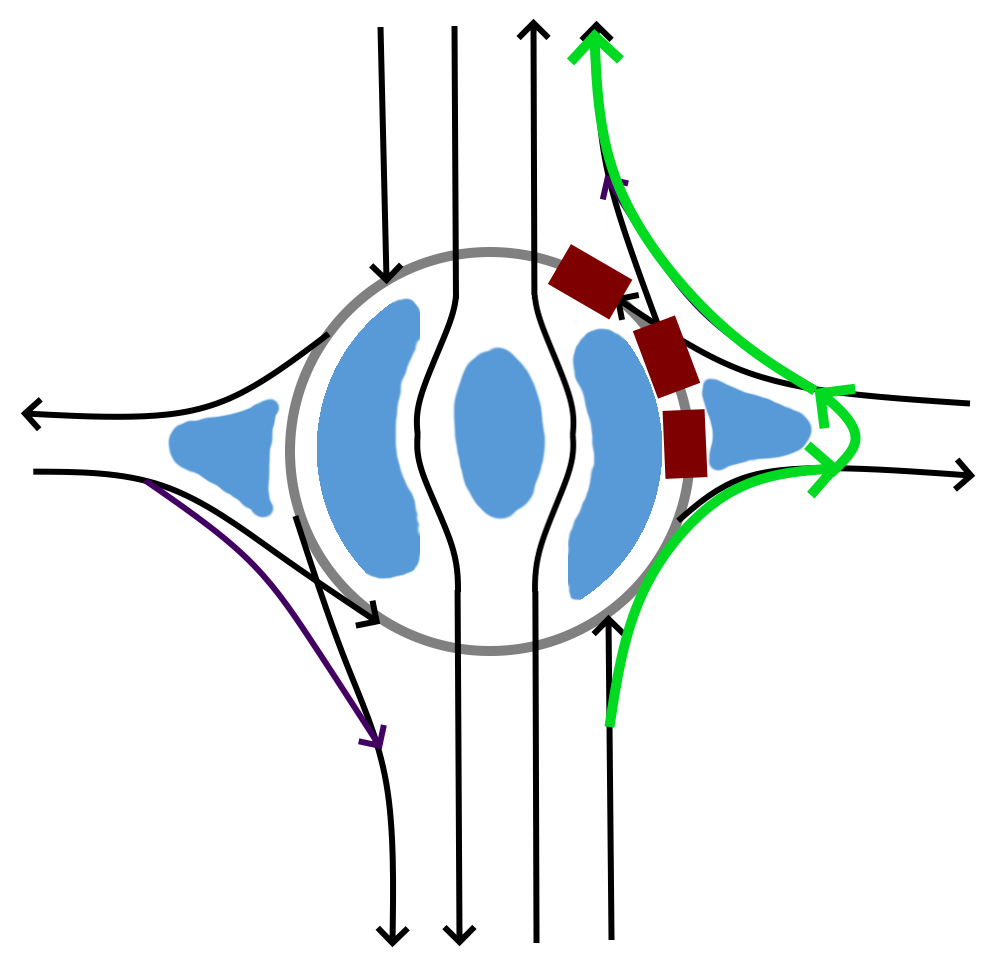=cities =traffic =suggestion =roads
Single-lane roundabouts work
fairly well and are widely used. They have slightly higher capacity than
2-lane intersections with traffic signals, and much better safety.
However, they have a flaw that's bothered me: You can't tell if someone in
the roundabout is leaving it immediately before where you would enter, so
you need to wait, even though it might not be necessary. Roundabouts also
don't scale up very well. 2-lane ones have <2x the capacity, and have
significantly higher accident rates.
the design
Thinking about
how to mitigate those issues, I designed a new type of traffic intersection,
which is specifically for intersections of 4-lane roads with 2-lane roads,
that should have exceptionally good throughput. I call it the "shortcut
roundabout". I wrote this post to explain that concept. First, here's the
layout:

Black arrows are road lanes, and blue areas are raised pedestrian refuges. Now, here's traffic flow for vehicles coming from the bottom:

Green arrows represent flow, and
red dotted lines indicate where those vehicles must look for vehicles to
yield to. Light purple dotted lines indicate vision of vehicles yielding to
the traffic following green arrows. The rule drivers follow is: yield to
traffic coming from their left, but not to traffic from their right.
You can see that vision for entering vehicles crosses a lane, but this is
acceptable, because if vision is obstructed, the vehicles blocking vision
provide enough information. If entering inner-lane vision is blocked by
oncoming inner-lane traffic, ring traffic is yielding and it's safe to
enter. If entering outer-lane vision is blocked by entering inner-lane
traffic, then the behavior of the inner-lane traffic (stopping or entering)
can be copied.
When vehicles are waiting to turn left, drivers going
straight can turn right and do a U-turn, as shown here:

other designs
There are
several roundabout variants in use now. The ones most similar to this
proposal are probably
turbo
roundabouts (which don't have a route thru the center) and
through
roundabouts which
use traffic
signals
and often have more lanes. A lot of people have said that turbo roundabouts
look confusing, and while they're not that difficult to use in practice, I
think the aspects people find confusing are related to them having worse
safety than single-lane roundabouts.
I previously wrote
this
post on a variant of
4-way stops. It was one of my first posts here. I wrote that as an example
of something that's simple, easy to understand, cheap to implement, and that
would have a small but noticeable positive impact on regular people, but
wouldn't be implemented. The shortcut roundabout is harder to understand and
more expensive to implement but has higher performance, so it doesn't
fulfill the same purpose.